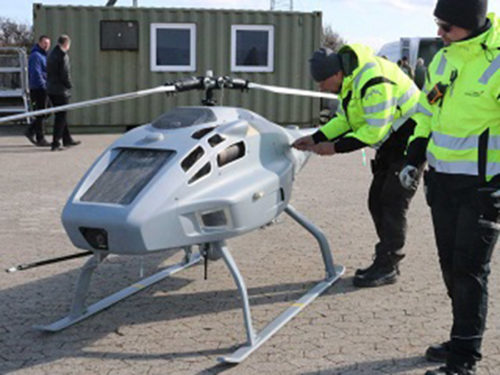
Ahead of the implementation of the International Maritime Organisation (IMO) fuel sulphur cap rule in January 2020, the Danish Maritime Authority plans to deploy a large drone to check emissions from ships in Danish waters to make sure they comply with the sulfur limit.
The unmanned aerial vehicle will operate in an area north of The Great Belt, a strait between the major islands of Zealand and Funen in Denmark where many large tankers pass when plying the Baltic Sea.
The drone, provided by the European Maritime Safety Agency (EMSA), is fitted with a so-called ‘sniffer’ capable of measuring sulphur emissions.
“The project will contribute to a more efficient enforcement of the sulphur rules, thereby ensuring fair competition for shipping companies and less pollution from ships,” Danish Maritime Authority said.
Entering the ship’s exhaust gas plume, the drone can register the amount of sulphur in the fuel. The data can be immediately available to the Danish authorities who can then follow up if a ship does not comply with the regulatory requirements.
The unmanned aerial vehicle, last Thursday performed its first sulphur measuring mission in The Great Belt.
The Danish Environmental Protection Agency is responsible for enforcing the sulphur rules, while the Danish Maritime Authority supports this work through ship inspections in Danish ports and now also with drone monitoring.